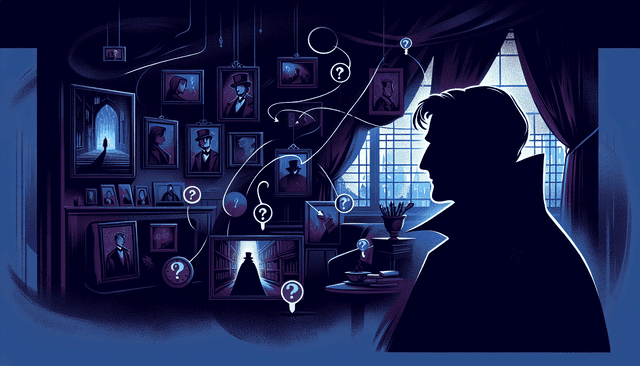Table of Contents
Writing a plot twist can feel daunting, right? You want to surprise your readers but also leave them feeling satisfied. Nobody likes a twist that feels forced or out of nowhere—it’s like serving a dessert without the main course!
But don’t worry! With the right tools and techniques, you can craft a twist that not only catches your readers off guard but also fits perfectly into your story. Stick around, and I’ll share steps that will help you master this skill.
In this guide, we’ll explore how to choose the right twist, use clever foreshadowing, and keep your readers guessing until that big reveal. Let’s dive in and make your plot twists unforgettable!
Key Takeaways
- Choose a plot twist that aligns with your story’s theme and enhances character development.
- Use foreshadowing to plant subtle hints throughout the narrative, leading to the twist.
- Mislead readers by creating suspicion around one character while hiding the true reveal elsewhere.
- Ensure the twist feels believable and consistent with the established story elements.
- Create tension leading up to the twist to maximize its impact and keep readers engaged.
- Time your plot twist effectively, ideally placing it near the climax for a strong surprise.
- Avoid overloading your story with too many twists, which can confuse readers.
- Study successful plot twists in other media to learn effective techniques and patterns.
- Revise and seek feedback to refine your twist and ensure it resonates with your audience.

How to Write an Effective Plot Twist
A plot twist is that delightful surprise that keeps readers on the edge of their seats. It should feel unexpected yet inevitable once revealed. Think of it like a magician’s trick; if he pulls a rabbit out of a hat, the audience must feel that something was amiss all along, even if they can’t pinpoint what. Begin by considering how your twist will enhance the overarching theme of your story. Is it a shocking betrayal, a character’s hidden identity, or an unexpected outcome of events? Whatever you choose, remember that a twist should tighten the story’s grip on your reader, making them rethink everything they thought they understood.
Step 1: Choose Your Plot Twist
Start by brainstorming potential plot twists that align with your story’s tone and genre. For instance, in a mystery, the twist could reveal the murderer is someone unexpected, while in a romance, it might involve a lover’s hidden past. Make sure your idea is strong enough to resonate with your reader and propel the plot forward. Once you have a shortlist, consider how each twist affects your characters and their arcs. A well-chosen twist not only surprises but deepens the reader’s connection with the story.
Step 2: Plant the Seeds with Foreshadowing
Foreshadowing is like laying breadcrumbs for your reader, leading them to the twist without them realizing it. Sprinkle subtle hints throughout your narrative. This could be through dialogue, character actions, or even environmental details. Think about how effective shows like *Breaking Bad* masterfully hint at future events—it’s all about carefully constructing those clues without giving too much away. Remember, with foreshadowing, the key is balance; you want readers to notice the hints when they reflect back, but not so much that they solve the mystery before you lay it out.

Step 4: Mislead Readers with Character Actions
Character actions can be a goldmine for misdirection. If someone seems suspicious, readers will likely focus on them, allowing you to hide the true intentions of another character. Give readers the impression that a character’s actions are leading to one conclusion, while subtly steering them towards a different reveal. It’s like in a classic whodunit where everyone has a motive except the person who turns out to be innocent. Make sure these actions are consistent with the character, so when readers look back, the twist feels justified.
Step 5: Ensure Your Twist is Believable and Consistent
A plot twist needs to fit seamlessly within the story. If a twist comes out of nowhere and doesn’t align with established facts and character development, it can feel more annoying than surprising. Maintain an internal logic where every piece of information or character trait can be traced back to the twist when readers think it over. For example, a character’s hidden skill or secret should be hinted at without overtly revealing it. This kind of consistency builds credibility and keeps readers engaged.
Step 6: Maintain Tension Leading Up to the Twist
Tension is crucial in storytelling, especially before a plot twist. It keeps readers on high alert, making the eventual reveal even more impactful. If there’s too much calm before the storm, readers might let their guard down. Look at shows like *The Walking Dead*, which build tension through character dilemmas and external threats. Use pacing to your advantage—shorter sentences during high-stakes moments can amp up the urgency, drawing readers toward the twist.
Step 7: Time Your Plot Twist for Maximum Impact
Timing can make or break your twist. It’s most effective to drop a plot twist after a fair amount of buildup, often toward the climax of your story. Introducing it too early can dilute its impact. Think of it as the comedic timing in a stand-up set; deliver the punchline when the audience least expects it. This way, readers are more likely to have that “OMG, how did I not see that coming?” reaction, reacting positively instead of feeling confused.
Step 8: Avoid Common Plot Twist Pitfalls
One major pitfall is introducing too many twists. One well-placed plot twist can be memorable, while multiple twists can feel convoluted and distract from your main story. Additionally, avoid using clichés like “it was all a dream,” as most readers won’t find these satisfying. Take care to craft your twist in a way that doesn’t feel like a cheat. If readers feel swindled rather than surprised, it can lead to disengagement. Consider using resources like dystopian story structures to guide your twist development.
Step 9: Learn from Examples of Successful Plot Twists
Analyzing effective plot twists in literature and film can provide you with valuable insights. Take a look at works like *The Sixth Sense*, where the twist redefines everything that came before. This will help you understand how to layer clues and build suspense effectively. Engaging with successful plot twists allows you to recognize patterns in storytelling that you might want to emulate in your own writing.
Step 10: Revise and Get Feedback on Your Plot Twist
Writing is a process, and that applies to plot twists as well. After you’ve penned your twist, revise to make sure it aligns with the rest of your story. Getting feedback from beta readers can be invaluable; ask them if the twist made sense and if they felt misled in the right way. If they saw it coming too easily, it’s time to tighten things up. Remember, revision isn’t just about correcting grammar—it’s about enhancing your narrative. Revision is a key part of crafting a plot twist that resonates with readers.
FAQs
A plot twist is an unexpected development in a story, designed to surprise the reader. It’s important because it evokes strong emotions, enhances the narrative, and keeps readers engaged by subverting expectations.
Foreshadowing hints at future events through subtle clues. To use it effectively, sprinkle these clues naturally throughout the narrative, making them seem like minor details to avoid raising suspicion until the twist occurs.
Avoid making your plot twist overly complicated or relying on coincidences. Ensure it remains consistent with the story and characters. Additionally, don’t use twists for shock value alone; they should enhance the narrative.
To assess believability, ensure your twist aligns with character motivations, story themes, and established plot elements. Sharing your twist with trusted beta readers for feedback can provide valuable perspectives on its authenticity.



